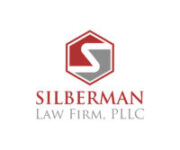
Texas homeowners have always had a homestead exemption available to them for their primary residence. This exemption helps to lower property taxes for homeowners by excluding a portion of the appraised value of the home from its taxable value. For example, an exemption of $25,000 from a home’s taxable value is available from most Texas school districts, which lowers the amount a homeowner owes in property taxes.
Eligibility
A homestead exemption, the most common type of exemption, is available to homeowners who own and occupy their home. The tax breaks resulting from homestead exemptions are most relevant for homes that do not already have an existing homestead exemption. If a seller has a homestead exemption, for example, and the buyer purchases the home as a primary residence, the homestead exemption and resulting tax breaks are still in effect. In contrast, buying a rental home that has not yet been declared as a primary residence means that home does not already have a homestead exemption or tax breaks.
Change to Filing Date
For homes that do not already have a homestead exemption at the time of purchase, the eligibility date has a significant impact on what the homeowner must pay. Until January 1, 2022, new homeowners could not become eligible for a property-tax homestead exemption until January of the year following their purchase. Until the recent change, if the homeowner purchased a home on January 2, 2019, that homeowner would have to wait nearly a full year before being eligible for a homestead exemption, meaning that tax breaks would not become available until nearly a year after the purchase of the home. Fortunately for new homeowners, amendments to the Homestead Exemption Act mean that homeowners may now file for a homestead exemption immediately after closing on their primary residence.
The complete Homestead Exemption Act also includes information about how the taxes are determined, including how they are prorated. The amended act, effective January 1, 2022, is included at the end of this article, with changes in red.
Changes to the Homestead Exemption Act could result in significant savings for homeowners, but understanding the requirements and how taxes are prorated can be confusing. An experienced real estate lawyer can clarify any questions, helping a new homeowner receive all of the tax exemptions available to him or her.
| BE IT ENACTED BY THE LEGISLATURE OF THE STATE OF TEXAS: | |
| SECTION 1. Section 11.42, Tax Code, is amended by adding | |
| Subsection (f) to read as follows: | |
| (f) A person who acquires property after January 1 of a tax | |
| year may receive an exemption authorized by Section 11.13, other | |
| than an exemption authorized by Section 11.13(c) or (d), for the | |
| applicable portion of that tax year immediately on qualification | |
| for the exemption if the preceding owner did not receive the same | |
| exemption for that tax year. | |
| SECTION 2. Section 11.43(d), Tax Code, is amended to read as | |
| follows: | |
| (d) To receive an exemption the eligibility for which is | |
| determined by the claimant's qualifications on January 1 of the tax | |
| year, a person required to claim an exemption must file a completed | |
| exemption application form before May 1 and must furnish the | |
| information required by the form. A person who after January 1 of a | |
| tax year acquires property that qualifies for an exemption covered | |
| by Section 11.42(d) or (f) must apply for the exemption for the | |
| applicable portion of that tax year before the first anniversary of | |
| the date the person acquires the property. For good cause shown the | |
| chief appraiser may extend the deadline for filing an exemption | |
| application by written order for a single period not to exceed 60 | |
| days. | |
| SECTION 3. Section 23.23, Tax Code, is amended by adding | |
| Subsection (c-1) to read as follows: | |
| (c-1) For purposes of Subsection (c), an owner who receives | |
| an exemption as provided by Section 11.42(f) is considered to have | |
| qualified the property for the exemption as of January 1 of the tax | |
| year following the tax year in which the owner acquired the | |
| property. | |
| SECTION 4. Chapter 26, Tax Code, is amended by adding | |
| Section 26.1115 to read as follows: | |
| Sec. 26.1115. CALCULATION OF TAXES ON RESIDENCE HOMESTEAD | |
| GENERALLY. (a) If an individual receives one or more exemptions | |
| under Section 11.13 for a portion of a tax year as provided by | |
| Section 11.42(f), except as provided by Subsection (b) of this | |
| section, the amount of tax due on the property for that year is | |
| calculated by: | |
| (1) subtracting: | |
| (A) the amount of the taxes that otherwise would | |
| be imposed on the property for the entire year had the individual | |
| qualified for the exemptions for the entire year; from | |
| (B) the amount of the taxes that otherwise would | |
| be imposed on the property for the entire year had the individual | |
| not qualified for the exemptions during the year; | |
| (2) multiplying the remainder determined under | |
| Subdivision (1) by a fraction, the denominator of which is 365 and | |
| the numerator of which is the number of days in that year that | |
| elapsed before the date the individual first qualified the property | |
| for the exemptions; and | |
| (3) adding the product determined under Subdivision | |
| (2) and the amount described by Subdivision (1)(A). | |
| (b) If an individual receives one or more exemptions to | |
| which Subsection (a) of this section applies for a portion of a tax | |
| year as provided by Section 11.42(f) and the exemptions terminate | |
| during the year in which the individual acquired the property, the | |
| amount of tax due on the property for that year is calculated by: | |
| (1) subtracting: | |
| (A) the amount of the taxes that otherwise would | |
| be imposed on the property for the entire year had the individual | |
| qualified for the exemptions for the entire year; from | |
| (B) the amount of the taxes that otherwise would | |
| be imposed on the property for the entire year had the individual | |
| not qualified for the exemptions during the year; | |
| (2) multiplying the remainder determined under | |
| Subdivision (1) by a fraction, the denominator of which is 365 and | |
| the numerator of which is the sum of: | |
| (A) the number of days in that year that elapsed | |
| before the date the individual first qualified the property for the | |
| exemptions; and | |
| (B) the number of days in that year that elapsed | |
| after the date the exemptions terminated; and | |
| (3) adding the product determined under Subdivision | |
| (2) and the amount described by Subdivision (1)(A). | |
| (c) If an individual qualifies to receive an exemption as | |
| described by Subsection (a) with respect to a property after the | |
| amount of tax due on the property is calculated and if the effect of | |
| the qualification is to reduce the amount of tax due on the | |
| property, the assessor for each taxing unit shall recalculate the | |
| amount of the tax due on the property and correct the tax roll. If | |
| the tax bill has been mailed and the tax on the property has not been | |
| paid, the assessor shall mail a corrected tax bill to the individual | |
| in whose name the property is listed on the tax roll or to the | |
| individual's authorized agent. If the tax on the property has been | |
| paid, the collector for the taxing unit shall refund to the | |
| individual who paid the tax the amount by which the payment exceeded | |
| the tax due. | |
| SECTION 5. Section 39.082, Education Code, is amended by | |
| adding Subsection (c-1) to read as follows: | |
| (c-1) The system may not include an indicator under | |
| Subsection (b) or any other performance measure that penalizes a | |
| school district for failure to collect the amount of taxes equal to | |
| the total amount of tax refunds provided under Section 26.1115(c), | |
| Tax Code. | |
| SECTION 6. Section 48.202, Education Code, is amended by | |
| adding Subsection (e-1) to read as follows: | |
| (e-1) For purposes of this section, the total amount of | |
| maintenance and operations taxes collected by a school district | |
| includes the amount of taxes refunded under Section 26.1115(c), Tax | |
| Code. | |
| SECTION 7. Subchapter F, Chapter 48, Education Code, is | |
| amended by adding Section 48.2541 to read as follows: | |
| Sec. 48.2541. ADDITIONAL STATE AID FOR CERTAIN AD VALOREM | |
| TAX REFUNDS. For each school year, a school district, including a | |
| school district that is otherwise ineligible for state aid under | |
| this chapter, is entitled to state aid in an amount equal to the | |
| amount of all tax refunds provided under Section 26.1115(c), Tax | |
| Code. | |
| SECTION 8. This Act applies only to a residence homestead | |
| acquired on or after the effective date of this Act. | |
| SECTION 9. This Act takes effect January 1, 2022. |
All information provided on Silblawfirm.com (hereinafter "website") is provided for informational purposes only and is not intended to be used for legal advice. Users of this website should not take any actions or refrain from taking any actions based upon content or information on this website. Users of this site should contact a licensed Texas attorney for a full and complete review of their legal issues.
